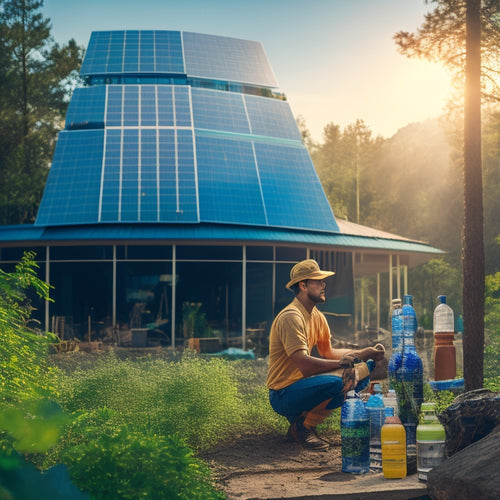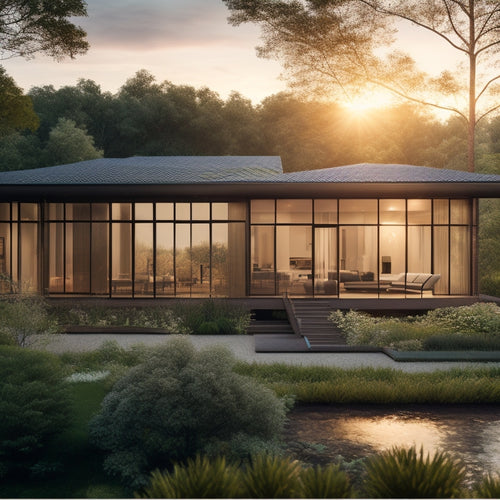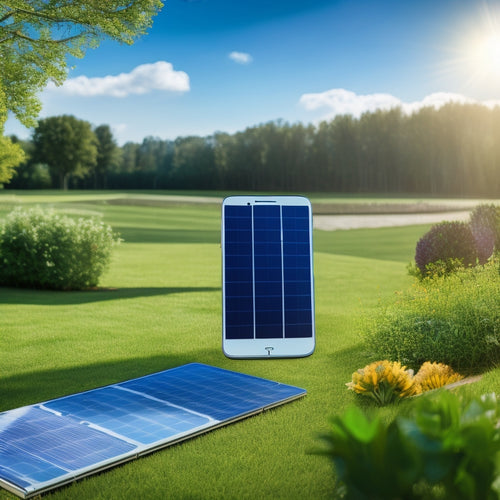
3 Eco-Friendly Cooling Hacks for Sun-Drenched Homes
Share
You're probably feeling the heat in your sun-drenched home, with temperatures soaring and energy bills skyrocketing - but there's a way to beat the heat without breaking the bank or harming the planet. Try these eco-friendly cooling hacks: install shading solutions like awnings or solar screens to block direct sunlight, which can reduce heat gain by up to 77%; utilize the cooling power of water with features like fountains or ponds that take advantage of evaporative cooling; or adopt smart ventilation strategies like cross ventilation and night ventilation to keep your home cool without AC. And that's just the beginning of your path to a cooler, greener home.
Key Takeaways
- Shading solutions like awnings, overhangs, and solar screens block direct sunlight, reducing heat gain by up to 77% and cooling homes naturally.
- Incorporating water features, such as fountains or ponds, provides cooling effects and can lower temperatures through evaporative cooling.
- Strategic design enables natural airflow and cross ventilation, reducing indoor temperature and improving air quality without relying on AC.
- Whole-house ventilation removes heat and moisture, decreasing AC reliance and creating a comfortable living space.
- Closing windows during the day and using night ventilation cools homes overnight, retaining coolness achieved through natural airflow.
Beat the Heat With Shading
About 75% of the sun's rays can enter your home through windows, making your space hotter than it needs to be.
Shifting to renewables, like solar-powered fast charging hubs, not only benefits electric vehicles but also provides a sustainable solution for home energy.
That's why window treatments are essential for keeping the heat out. You can install awnings, overhangs, or solar screens to block direct sunlight.
These shading solutions can reduce heat gain by up to 77%, making your home a cooler and more comfortable space.
Outdoor canopies and umbrellas can also provide shade, making outdoor living areas more enjoyable.
Cooling Power of Water
Water's cooling power is no secret - it's a natural temperature regulator that can be employed to keep your home cool without breaking the bank or harming the environment. You can tap into this power by incorporating water features into your home's design.
For instance, a small fountain or pond can provide a cooling effect through evaporative cooling, which occurs when water evaporates and absorbs heat from the surrounding air. This natural process can lower the temperature, making your home feel cooler and more comfortable.
Additionally, harnessing renewable energy sources like solar power solar energy utilization can further reduce your carbon footprint and energy costs. By leveraging these eco-friendly solutions, you can create a more sustainable and environmentally conscious living space.
Smart Ventilation Strategies
Through strategic placement and clever design, you can employ the power of smart ventilation strategies to keep your home cool and comfortable while minimizing your reliance on air conditioning. By utilizing natural airflow and cross ventilation, you can create a cooling effect without consuming excess energy.
| Ventilation Technique | Benefits | Best Practices |
|---|---|---|
| Cross Ventilation | Reduces indoor temperature, improves air quality | Open windows on opposite sides of the room to create a cooling breeze |
| Whole-House Ventilation | Removes heat and moisture, reduces AC usage | Install vents in the attic and soffit to allow hot air to escape |
| Night Ventilation | Cools your home overnight, reduces morning heat | Open windows at night to let cool air in, close during the day to retain coolness |
Frequently Asked Questions
Can I Use Fans With Air Conditioning to Increase Efficiency?
Curiously, you're not alone in wondering if using fans with AC enhances efficiency! Yes, you can - strategic fan placement helps circulate cooled air, reducing energy waste and amplifying energy savings, so go ahead and give it a try!
How Often Should I Clean My Air Conditioner's Filter?
You should clean your air conditioner's filter every 1-3 months to guarantee peak performance and air quality. Regular filter maintenance is key to keeping your AC running efficiently, so mark your calendar to stay on top of it!
Do Eco-Friendly Cooling Methods Work for Apartments or Rentals?
You're not alone: 75% of renters feel trapped by their lease! But, yes, eco-friendly cooling methods work for apartments or rentals too! Focus on passive cooling techniques and simple insulation improvements, like window treatments and door sweeps, to stay cool without breaking the bank or lease rules.
Can I Use Plants to Cool My Home in Addition to Shading?
You can utilize the power of indoor plants and vertical gardens to cool your home, as they absorb heat and release moisture, creating a natural cooling effect that'll leave your space feeling fresh and liberated!
Are There Any Government Incentives for Eco-Friendly Cooling Upgrades?
You can investigate government incentives for eco-friendly cooling upgrades, like tax credits and energy rebates, which can help offset costs and support your freedom to choose sustainable living.
Related Posts
-

What Tax Deductions Apply to Sustainable Building Materials?
You can claim various tax deductions for sustainable building materials, thanks to over 40 federal tax incentives sup...
-

7 Solar-Safe Window Solutions for Earth-Conscious Homeowners
As an earth-conscious homeowner, you're likely keen to find solar-safe window solutions that align with your values. ...
-

7 Best Solar Panel Upkeep Apps for Homeowners
You can optimize your solar panel's energy output and efficiency by up to 20% with regular maintenance, which is wher...


